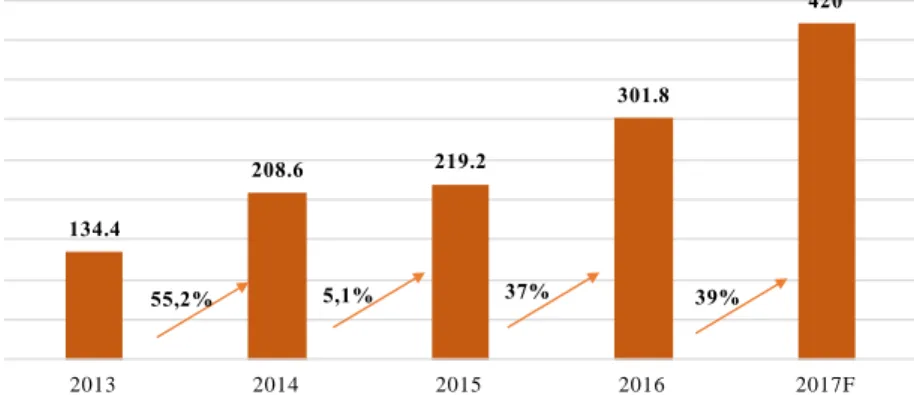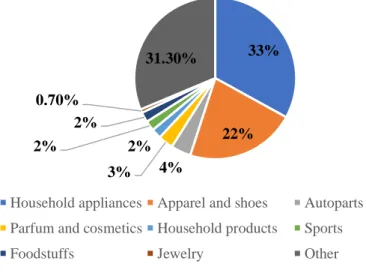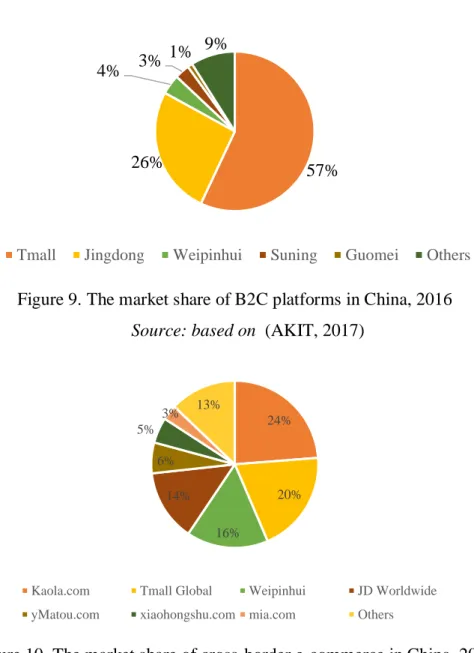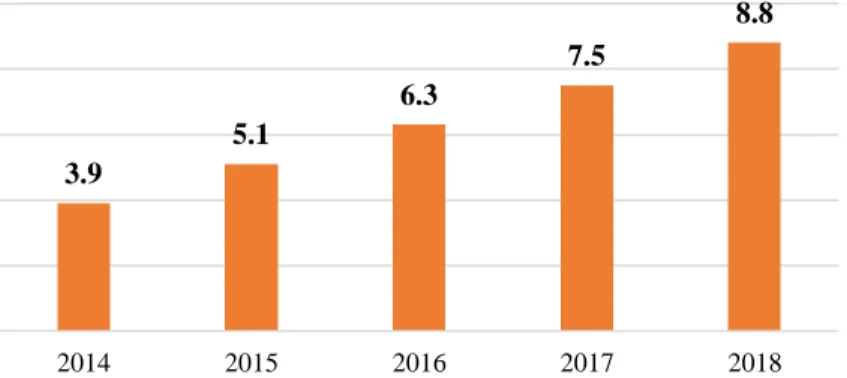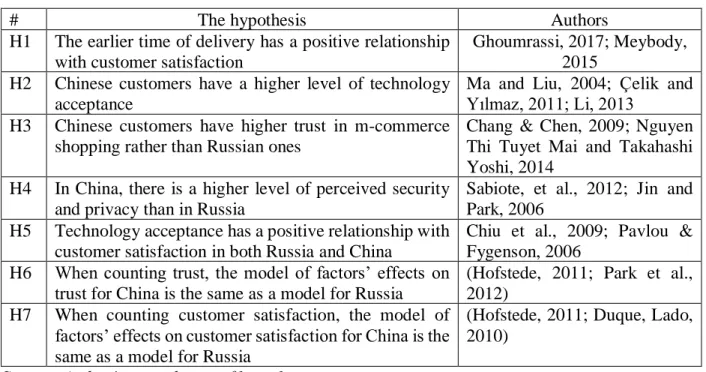The aim of the research is the adaptation of the model for customer satisfaction evaluation of Chinese and Russian customers on m-commerce market. First, the e- and m-commerce markets and customer satisfaction theories are analyzed to build a theoretical framework of the study.
Chapter one: Literature review
The overview of Russian e-commerce and m-commerce markets
In recent years, there has been a noticeable increase in the popularity of Chinese online stores among Russians. It should be noted that in Russia there is an imbalance in the development of the e-commerce market by region.
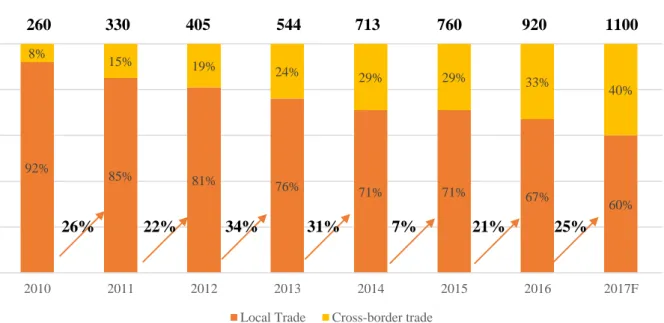
The overview of Chinese e-commerce and m-commerce markets
The third key factor in the success of the website Taobao can be called a powerful advertising campaign. Moreover, the volume of supply of goods in the Chinese markets is much higher than in Russia.
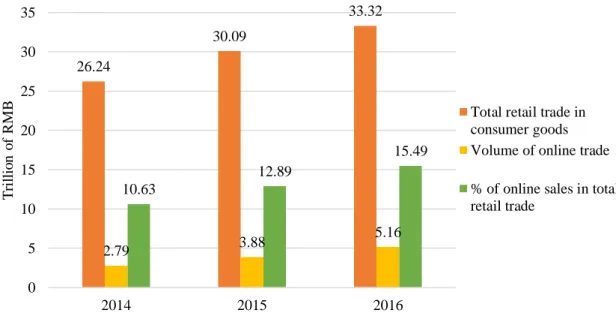
Customer satisfaction theoretical frameworks
- Customer satisfaction and technology acceptance
- Customer satisfaction and culture
- Customer satisfaction and trust
For example, few studies discuss the effects of logistics (on-time delivery, to be precise) on customer trust and satisfaction. Finally, most of the recent studies do not include a cultural factor that can exert a substantial effect on customer satisfaction.
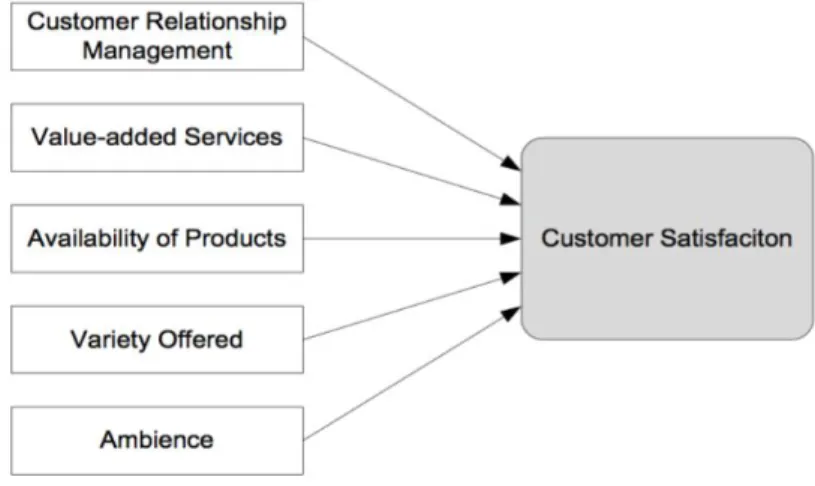
Chapter two: Methodology
Theoretical framework
Delay in the delivery of goods will definitely have a negative effect on customer satisfaction as the customer is forced to wait longer than planned (Zhang, Vonderembse and Lim 2005). One of the recent studies that focused on communication innovation – social networking sites – supported this idea (Gong et al. 2013). The use of Internet-based learning systems relies on the enhanced version of technology.
Moving on to the trust factor, we can say that it is one of the most discussed factors in the outraged model. However, the level of security and privacy proposed should only be applied to the technological innovations. Papers on the role of culture in customer satisfaction abounded in the late 1990s (Donthu and Yoo 1998; Furrer et al. 2000), and most were based on Hofstede's cultural dimensions.
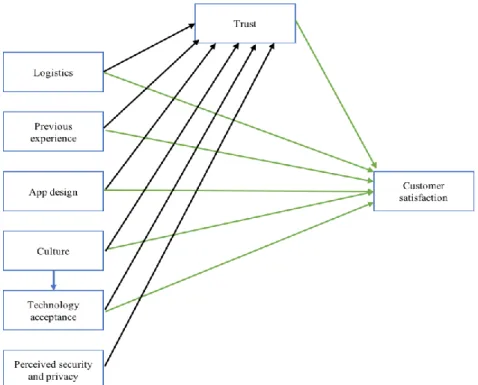
Scale development
However, there is an important note that when talking about customer satisfaction in different countries, it is necessary to understand that, for example, customers from different cultures may have different customer satisfaction. When comparing Russia and China, belonging to the culture has an impact on customer satisfaction. H7 When counting customer satisfaction, the model of factors impact on customer satisfaction for China is the same as a model for Russia.
For the translation into Chinese, the Chinese-speaking Russian was chosen in order to convey the meaning of the questions correctly. The second stage of the translation was the verification of the translated questionnaire by the professor from Tsinghua University to check whether the questions have the correct meaning for the Chinese customers. In the third to tenth parts, questions are asked about the factors. prior experience block, technology acceptance block, logistics block, perceived security and privacy block, application design block, trust block, customer satisfaction block, culture block).
Sampling strategy and data collection
This chapter presents the rationale behind the choice of a study topic, the sampling procedure and the methodology for building and verifying the questionnaire. First, based on the literature review, the theoretical model was presented consisting of two main parts: model for identifying the impact of factors on trust and model for identifying the impact of factors on customer satisfaction; furthermore, the sub-model for identifying the relationship between culture and technology acceptance was also presented. The questionnaire was mainly based on scales presented by studies by Thi Tuyet Mai, Takahashi Yoshi, Nham Phong Tuan (2014) and Wu and Wang (2005).
The cultural block was applied from Hofstede's paper "Culture and personality revisited: Linking traits and dimensions of culture." The questionnaire consists of eleven blocks. In the first nine blocks of the questionnaire, respondents specify their demographic profiles, family characteristics, international experience, cultural adaptation abilities, educational background, migration intentions, career expectations and work experience, and, finally, the perception of a local labor market. The questionnaire consists of 11 parts and 74 questions: the first and the second blocks are the controlling and general questions about popular mobile applications that respondents have to use.
Chapter three: Empirical results
Reliability analysis
Data Analysis
- Demographics
- General findings
- The hypotheses testing
Approximately an equal percentage of respondents are either students or full-time employees (with the student's advantage), and their economic situation can be described as. In the logistics block with the exchange variable, both Russian and Chinese customers are more inclined to the fact that there may be problems with the exchange of the product (Table 8) (Q: When purchasing through a mobile app, I may have problems with returns and exchanges of the product). Moving on to the speed of delivery of the products, Table 9 shows that customers of both countries are not satisfied with this variable (Q: I am satisfied with the speed of delivery of the products purchased through the mobile application) .
One of the reasons for this could also be the cultural factor, as discussed in the methodology section. For testing the sixth hypothesis, we used the regression analysis in SPSS (table 20). This chapter plays one of the key roles in this master's thesis as it shows the main finding considering the factors that influence the trust and customer satisfaction among Russian and Chinese customers.
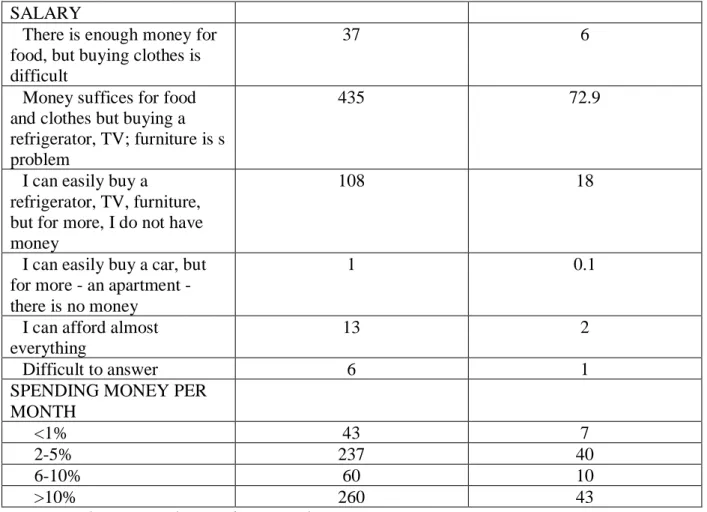
Chapter 4: Discussion and managerial implications
Discussion of empirical findings
Trust is higher among Chinese buyers and has a greater effect on customer satisfaction, as can be seen from the presented models (Figure 14). Interestingly, this paper showed that technology adoption does not affect m-commerce trust in both Russia and China, but if we talk about the generalized model, technology adoption is shown to be significant. Therefore, in general, as many studies argue, technology adoption is important for trust, but in a given country the situation may be different as shown here.
In addition, the results showed that technology adoption is a positive predictor of customer satisfaction in both Russia and China, which is consistent with Carol C's results. Such results can be explained by the following logic: as discussed and proven that trust in trade has a lower level than in China (as Table 11 shows, we could say that Russians do not trust online stores at all), then content, information and visualization do not affect the customer's perception of the mobile app at all from the point of view of the trust point of view. In this case, the previous experience can have a negative impact on customer satisfaction, as a customer who starts using a new application expects to be disappointed.
Managerial implications
Every market, country and culture has its own peculiarities, but most customer satisfaction surveys overgeneralize their findings and results. However, the application must be overloaded with a huge number of functionalities, as this will confuse the customer. In addition, according to the questionnaire, Chinese customers prefer online platforms to separate stores due to the possibility of direct communication with the m-seller.
Therefore, for a Russian customer who wants to expand into the Chinese market, it is preferable to join one of the existing stores and sell products as a partner or unite with one of the Chinese stores - "mimicry" strategy. In the case of perceived security and privacy, it is preferable to learn and thoroughly follow the policies used in China. However, as mentioned above, the best option is to unite with one of the already existing Chinese m-shops: because even if Russian developer and businessmen come up with a new app, it will be considered foreign, and according to the above discussed results and theory - it will reduce confidence in the application.
Limitations and further researches
The Effect of Perceived Security on Consumer Purchase Intentions in Electronic Commerce.» International Journal of Public Sector Performance Management. Customer satisfaction and retail banking: an assessment of some of the most important determinants of customer satisfaction in retail banking.» International Journal of Banking Mark 146-160. An empirical study of customer satisfaction with technology-mediated service encounters in connection with online shopping.» Journal of Information Technology Management 2: 18-37.
Determinants of Online Customer Satisfaction in an Emerging Market – The Mediating Role of Trust.” International Journal of Contemporary Management 13. The Effect of Setting Expectations on Customer Satisfaction and the Shopping Experience.” Journal of Marketing Research. Agency and mechanisms of trust in the assessment of consumer satisfaction and loyalty. Journal of the Academy of Marketing Science 150-167.
Russian version of the questionnaire
Chinese version of the questionnaire
我会通过我已经熟悉的软件来买东西,而不是寻找新的软件 6. 如果应用程序有评分和反馈功能,我会使用该应用程序来买东西。如果该应用程序易于使用,我会用它来买东西。
如果应用程序中的界面不方便,我不会用它来买东西 44. 我选择输入信息并快速支付的软件。如果我必须选择网上买东西还是去商店,我会选择其他54。我不喜欢我喜欢很多软件没有在线联系客服的功能55。
Scale development
When purchasing through a mobile application, you may experience problems returning and replacing the product. When buying through mobile applications, you have to wait a long time for the delivery of the goods. When purchasing through a mobile application, I feel fear or uncertainty by entering my personal information (name, email, etc.).
I believe that buying through mobile apps is very risky due to the undeveloped legislative system on internet security. I trust mobile applications for purchasing goods Nguyen Thi Tuyet Mai and Takahashi Yoshi, 2014. When buying from an unknown seller, I prefer to make a purchase through a mobile application, rather than through the website.
Reliability test
Regression analysis for dependent variable “trust”
Regression analysis for dependent variable “Customer satisfaction”
